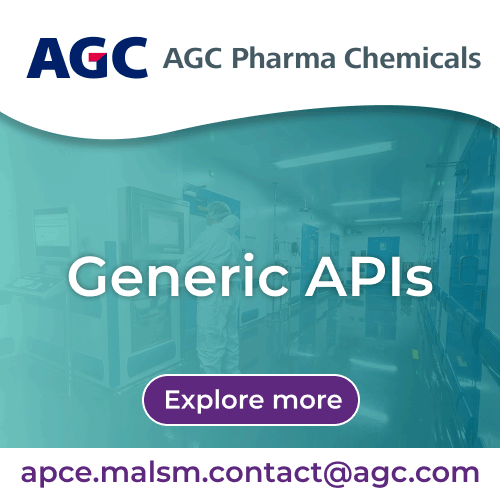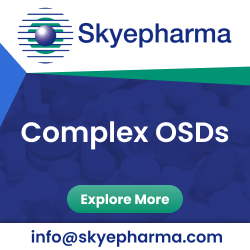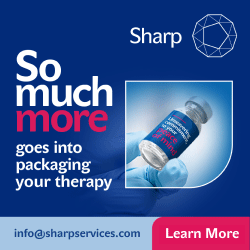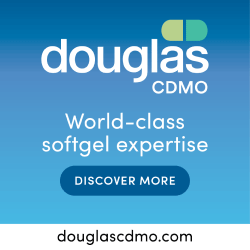BLOG
MARKET INTEL by PharmaCompass
CONTENT by Suppliers
- Interview #SpeakPharma
- Video #SupplierSpotlight
- Vlog #PharmaReel
- Company Bio #AboutSupplier
- Service Bio #AboutCapabilities
News
Create content with us, ask us

01 Ampoule
02 Ampoule
03 Ampoule
04 Ampoule
05 Auto Injector / Pen
06 Blister
07 Blister
08 Blister
09 Blister
10 Blister
11 Blister
12 Blister
13 Blister
14 Blister
15 Blow Fill Seal (BFS)
16 Bottle
17 Bottle
18 Bottle
19 Bottle
20 Bottle
21 Bottle
22 Bottle
23 Cartridge
24 Cartridge
25 Compliance Packaging
26 Controlled Substance
27 High Potent / Biologic / Controlled Substance
28 High Potent / Biologic / Controlled Substance
29 Jar
30 Jar
31 Ophthalmic
32 Overview
33 Overview
34 Overview
35 Overview
36 Overview
37 Overview
38 Overview
39 Overview
40 Overview
41 Overview
42 Pouch / Sachet / Stick Pack
43 Pouch / Sachet / Stick Pack
44 Pouch / Sachet / Stick Pack
45 Pouch / Sachet / Stick Pack
46 Pouch / Sachet / Stick Pack
47 Pouch / Sachet / Stick Pack
48 Pre-Filled Syringe
49 Pre-Filled Syringe
50 Pre-Filled Syringe
51 Pre-Filled Syringe
52 Pump / Spray
53 Secondary Packaging
54 Secondary Packaging
55 Secondary Packaging
56 Secondary Packaging
57 Secondary Packaging
58 Secondary Packaging
59 Secondary Packaging
60 Secondary Packaging
61 Serialization Compliance
62 Serialization Compliance
63 Serialization Compliance
64 Serialization Compliance
65 Serialization Compliance
66 Serialization Compliance
67 Serialization Compliance
68 Serialization Compliance
69 Surgical & Dressing
70 Tube
71 Tube
72 Vial
73 Vial
74 Vial
75 Vial
76 Vial

01 AbbVie Contract Manufacturing
02 Acceleration Laboratory Services
03 Aenova Group
04 Albea
05 Alltub
06 Amcor
07 Athena Pharmaceutiques
08 Avara Pharmaceutical Services
09 Bahrain Pharma
10 Biocorp
11 BirgiMefar Group
12 Bora Pharmaceuticals
13 Catalent Pharma Solutions
14 Chanelle Medical
15 Cook Pharmica LLC.
16 Delpharm Group
17 Douglas CDMO
18 Ecobliss
19 Ethypharm
20 Famar
21 Fermion Oy
22 Gensenta Pharmaceuticals
23 Glass Surface Technology
24 Halo Pharmaceutical
25 JGL d.d
26 Laboratoires Gilbert
27 Medichem S.A
28 Mikart
29 Millmount Healthcare
30 Mission | CDMO
31 NanoAlvand
32 Nemera
33 Oncomed Manufacturing A.S
34 Orofino Pharmaceuticals Group
35 PHARMEAL LABORATOIRES
36 PROCLIN PHARMA S.A
37 Pelican BioThermal
38 Pfizer CentreOne
39 Pharmapan
40 Polfa Tarchomin
41 RX Pharma Pack
42 Recipharm AB
43 Reed-Lane
44 Rondo AG
45 Ropack Inc
46 Rovipharm
47 Santa
48 Sharp
49 Skyepharma
50 Societal CDMO
51 Sofarimex
52 TriRx Pharmaceutical Services
53 Unither Pharmaceuticals
54 Wasdell Group
55 WellSpring Consumer Healthcare
56 West Pharmaceutical Services

01 Bahrain
02 Colombia
03 Croatia
04 Czech Republic
05 Finland
06 France
07 France
08 France
09 France
10 Germany
11 Greece
12 Iran
13 Ireland
14 Italy
15 Netherlands
16 New Zealand
17 Poland
18 Portugal
19 Romania
20 Spain
21 Sweden
22 Switzerland
23 Taiwan
24 Turkey
25 U.S.A
26 U.S.A
27 U.S.A
28 U.S.A
29 U.S.A
30 U.S.A
31 U.S.A
32 United Kingdom
- Analytical > Analytical Method Development
- Analytical > Analytical Testing Services > Inhalation Products
- Analytical > BioAnalytical Services
- API & Drug Product Development > API Development
- API & Drug Product Development > API Development > Antibody Drug Conjugate
- API & Drug Product Development > API Development > Fine Chemical / Intermediate
- API & Drug Product Development > API Development > High Potency APIs (HPAPIs)
- API & Drug Product Development > API Development > Impurity / Reference Standard
- API & Drug Product Development > API Development > Oligonucleotide / Polynucleotide
- API & Drug Product Development > API Development > Oligosaccharides & Polysaccharides
- API & Drug Product Development > API Development > Overview
- API & Drug Product Development > API Development > Process Development & Optimization
- API & Drug Product Development > API Development > Protein / Peptide
- API & Drug Product Development > API Development > Separation & Purification
- API & Drug Product Development > API Development > Small Molecules
- API & Drug Product Development > API Development > Spray Drying
- API & Drug Product Development > Formulation Development
- API & Drug Product Development > Formulation Development > Buccal / Orodispersible
- API & Drug Product Development > Formulation Development > Capsule
- API & Drug Product Development > Formulation Development > Chewable / Suckable
- API & Drug Product Development > Formulation Development > Clinical Supply
- API & Drug Product Development > Formulation Development > Compounding
- API & Drug Product Development > Formulation Development > Controlled / Immediate / Modified Release
- API & Drug Product Development > Formulation Development > Controlled Substance
- API & Drug Product Development > Formulation Development > Granule / Pellets
- API & Drug Product Development > Formulation Development > Inhalation / Nasal
- API & Drug Product Development > Formulation Development > Injectable / Parenteral
- API & Drug Product Development > Formulation Development > Liquid Formulation
- API & Drug Product Development > Formulation Development > Lyophilization
- API & Drug Product Development > Formulation Development > Ophthalmic
- API & Drug Product Development > Formulation Development > Pediatric Formulation
- API & Drug Product Development > Formulation Development > Scale-Up Capabilities
- API & Drug Product Development > Formulation Development > Sterile Liquid Formulation
- API & Drug Product Development > Formulation Development > Suspension
- API & Drug Product Development > Formulation Development > Tablet
- API & Drug Product Development > Formulation Development > Topical
- API & Drug Product Development > Preformulation & Material Science > Particle Size Reduction & Micronization
- API & Drug Product Development > Preformulation & Material Science > Polymorph & Crystal Screening
- API & Drug Product Development > Preformulation & Material Science > Solubility Assessment & Enhancement
- API & Drug Product Development > Preformulation & Material Science > Taste Masking
- API Manufacturing > Antibiotic
- API Manufacturing > Antibody Drug Conjugate
- API Manufacturing > Biologics, Bioprocess & Fermentation
- API Manufacturing > Chiral Synthesis
- API Manufacturing > Clinical Supply
- API Manufacturing > Continuous Flow Process
- API Manufacturing > Contract Manufacturing
- API Manufacturing > Controlled Substance
- API Manufacturing > Custom Synthesis & Manufacturing
- API Manufacturing > Cytotoxic Compound
- API Manufacturing > Drying > Spray Drying
- API Manufacturing > Fine Chemical / Intermediate
- API Manufacturing > GMP Manufacturing
- API Manufacturing > Hazardous Chemistry
- API Manufacturing > High Potency APIs (HPAPIs)
- API Manufacturing > Micronization
- API Manufacturing > Oligonucleotide / Polynucleotide
- API Manufacturing > Oligosaccharides & Polysaccharides
- API Manufacturing > Organometallic Chemistry
- API Manufacturing > Organometallic Chemistry > Cyanation
- API Manufacturing > Organometallic Chemistry > Metal Hydride Reduction
- API Manufacturing > Ozonolysis
- API Manufacturing > Process Development & Optimization
- API Manufacturing > Protein / Peptide > Synthesis
- API Manufacturing > Reference Standard
- API Manufacturing > Scale Up
- API Manufacturing > Separation & Purification
- API Manufacturing > Small Molecules
- Clinical Trials > Compliance, Regulatory & Consulting
- Clinical Trials > Packaging & Logistics
- Clinical Trials > Medical Writing & Language Translation
- Clinical Trials > Patient / Investigator Recruitment
- Clinical Trials > Technology / Data / Analytics
- Drug Product Manufacturing > Biologic Drugs
- Drug Product Manufacturing > Capsule
- Drug Product Manufacturing > Capsule > Steroid / Hormone
- Drug Product Manufacturing > Compounding
- Drug Product Manufacturing > Cream / Lotion / Ointment
- Drug Product Manufacturing > Emulsion > Overview
- Drug Product Manufacturing > Gel > Overview
- Drug Product Manufacturing > Granule / Pellet
- Drug Product Manufacturing > Injectable / Parenteral
- Drug Product Manufacturing > Injectable / Parenteral > Overview
- Drug Product Manufacturing > Injectable / Parenteral > Pre-Filled Syringe
- Drug Product Manufacturing > Liquid
- Drug Product Manufacturing > Lyophilization
- Drug Product Manufacturing > Nasal
- Drug Product Manufacturing > Softgel Capsule
- Drug Product Manufacturing > Solution > Overview
- Drug Product Manufacturing > Spray
- Drug Product Manufacturing > Suppository
- Drug Product Manufacturing > Suspension > Overview
- Drug Product Manufacturing > Syrup
- Drug Product Manufacturing > Tablet
- Drug Product Manufacturing > Technologies
- Drug Product Manufacturing > Technologies > Orally Disintegrating Tablets (ODTs)
- Drug Product Manufacturing > Technologies > Taste Masking
- Packaging > Clinical Services
- Packaging > Contract Services
- Packaging > Contract Services > Serialization Compliance
- Packaging > Logistic Services
- Empty Capsules
- Empty Capsules > Clinical Supply
- Empty Capsules > HardGel
- Empty Capsules > Inhalation
- Emulsifying Agents
- Soft Gelatin
- Solubilizers
Overview of the primary & secondary packaging services & commercial contract packaging solutions offered by CDMO, CMO contract packagers
Q1. What are the different types of Pharmaceutical Packaging Services offered in the industry?
Pharmaceutical contract packaging companies provide a range of pharmaceutical packaging services including high volume commercial packaging solutions for the primary and secondary packaging types outlined below, as well as support services through the life cycle of drug products.
Packaging is an essential part of the pharmaceutical supply chain as it is a means of presenting, promoting, identifying, informing, complying, and stabilizing drug products and further serves to protect them for distribution, storage, sale, and finally, consumption.
While customized packaging services may differ from company to company or across countries, they are united by their shared goals of assuring patient safety & efficacy of the drug product through its intended shelf life, uniformity of the drug through different production lots, thorough documentation of all materials and processes, control of possible migration of packaging components into the drug & degradation of the drug, sterility, etc. Conventionally, the pharmaceutical packaging industry is divided into three sections namely: primary packaging, secondary packaging, and tertiary packaging.
Contract packagers offer a suite of pharmaceutical packaging standard services including:
- Capsule & tablet blister packaging
- Strip packaging
- Bottling
- Organic encapsulation
- Shrink-wrapping
- Collating
- Clam shell packaging
- Pouch packaging
- Flow wrapping
- Serialization drive contract packaging services
- Repackaging
- Heat sealing
- Cartoning
- Cold chain capabilities
- Stability packaging
- Pharmaceutical serialization & aggregation
- Label designing
- Kitting
- Bundling
- Bagging
- Printing
- GMP compliance
Q2. What is the difference between primary and secondary packaging?
Primary Packaging
Primary medical packaging, also referred to as sales, retail or consumer packaging, is the material that is in direct contact with drug products. Therefore, it is necessary to know the possible interactions between the primary pharmaceutical packaging containers and their respective contents.
Normally, drug product stability and compatibility are confirmed, which make sure that the custom pharmaceutical packaging is inert and does not alter the chemical composition of the drug, during the primary research and development stage. The main purpose of primary innovative packaging solutions are to protect and/or preserve, contain, and inform the consumer about the drug products they contain.
When it comes to primary pharma packaging solutions, they should emphasize both utility and appearance as it is a key place to place one's logo, slogan, and other information that will help identify and distinguish one brand from another.
Primary pharma packaging solutions maintain the sterility of drug products keeping them fresh for longer, prevents them from breakage/ wear-and-tear, permits serialization & aseptic presentation of the packaged contents, makes shipping easier, and provides a selection of materials to choose from.
On the flip side, the disadvantages of primary pharmaceutical packaging services include difficulty in recycling, poor durability of some materials, and increases in shipping costs as well as consumer prices.
Some of the most common primary pharmaceutical contract packaging types are:
1. Ampoules
2. Vials
3. Blister Packs
4. Bottles
5. Sachets
6. Strip Packs
7. Syringes
Secondary Pharmaceutical Contract Packaging Services
The next level of pharmaceutical packaging is called secondary packaging. Secondary pharmaceutical contract packaging services provide the packaging that holds together the individual units of a good (primary packaged goods), often grouping them into multipacked units.
It is not designed to hold the drugs (that is the job of the primary pharmaceutical packaging standard services), so much as to deliver mass quantities of them to the point of sale or end user. As a result, secondary custom pharmaceutical packages may be removed from items without changing their qualities or attributes.
Typically, the level of packaging a consumer will see first is the secondary pharmaceutical contract packaging; this makes the appearance of secondary packages very important, so much so that designing and branding secondary pharmaceutical packaging can increase product sales.
The main function of secondary pharmaceutical packaging is for branding display and logistics as well as protecting and collating individual units during storage and it is therefore also referred to as grouped or display packaging.
Secondary contract packaging services are important for several reasons, including physical and barrier protection, ease of transport, secondary containment, adherence to regulations, and safety to the patient. Disadvantages include increase in retail price and production footprint, tendencies to get deformed, and decelerating time to market.
Types of secondary packages include, but are not limited to:
1. Cartons
2. Boxes
3. Trays
4. Bundles
5. Wraps
6. Pouches
Q3. What are the different materials used for Pharmaceutical Packaging?
Primary and secondary packaging serve different purposes and therefore the materials used for preparing them are discrete and unalike:
Primary packaging
1. Glass - commercial packaging solutions: Allows inspection of container contents and is available in a wide array of shapes. However, it is expensive as compared to plastic and can be fragile to handle. Ampoules and vials containing fluids for injections and bottles usually come in glass containers.
2. Plastic - innovative packaging solutions: It is flexible, lightweight, cheap and cannot be broken easily. However, they are not as chemically inert and impermeable to gasses and vapors as glass containers. Plastic is generally used for pill/tablet bottles, squeezable bottles for eye drops and nasal sprays, and flexible tubes.
3. Metal - pharma packaging solutions: Used solely in the packaging of non-parenteral drugs (not orally ingested). It is strong, opaque, ideal for pressurized containers, impermeable to moisture, gases, odors, light, etc. Disadvantages include corrosion, concealment of container contents, increased weight, and rigidity, etc. They are commonly used for manufacturing cans, aerosols, screw caps, strip & blisters packs.
Secondary packaging- Fibrous Materials:
1. Cardboard
2. Paper
3. Corrugated fiberboard
The applications and advantages of using fibrous materials in secondary medical packaging are that they increase the area for display, provide better stacking options, provide physical protection to primary packaged items, assemble leaflets, and outers (either as solid or corrugated boards) that aid in bulk shipment. Cartons, bags, labels, trays, boards, etc. are all constructed from fibrous materials, however, plastic may also be used for producing secondary custom pharmaceutical packaged goods.
Q4. What range of contract commercial packaging solutions can one expect from a pharmaceutical packaging service company?
The breadth of specialized pharmaceutical packaging services offered by contract packagers, from early-stage drug form and medical packaging design to managing a product through its life cycle, has expanded year over year. Contract commercial pharmaceutical packaging service providers offer a range of innovative packaging solutions including, but not limited to:
1. Coding and serialization: During serialization, each saleable unit of a prescription drug product, at the primary custom pharmaceutical packaging level, is assigned a unique serial number or code linked to information about the product's origin, batch number, and expiration date. Tracking counterfeit products, providing regulatory compliance, branding & consumer protection, and tracing capability throughout the pharmaceutical supply chain is enabled via serialization drive contract packaging services.
2. Aggregation: Secondary packaged assemblies undergo pharmaceutical aggregation-serialization. While serialization in itself adds a unique identifier to each product at an individual level, an aggregation solution adds codes to the outside of secondary medical packaging all the way up to cases and pallets. Serialization is compulsory, but aggregation is being increasingly implemented on a voluntary basis as it makes the distribution chain as well as stock level management more efficient.
3. Labelling: Within a complex regulatory landscape, sophisticated label solutions can play an important role in supporting product and patient safety. Initially, the label serves to mark the pharmaceutical packaging clearly and reliably by providing information on the product, its administration, and batch number. However, dosage forms and drug delivery methods can vary widely, so the label design has to be optimally tailored to meet the specific requirements of the medication.
4. Quality control: Medical packaging companies often offer cutting-edge technologies to ensure that the customers exact custom pharmaceutical packaging needs are met. The specification and requirement of quality testing depends on the type of pharmaceutical materials used. Containers are tested by many methods, adhering to specifications outlined by regulatory agencies including the USFDA, GMP, WHO, etc.
Temperature controlled pharmaceutical packaging services, blow fill seal (BFS) customized packaging services, secondary pharmaceutical contract packaging services, plasma impulse chemical vapor deposition (PICVD) coating technology, and cold chain capabilities are a few more contract commercial pharmaceutical packaging services that serve as solutions in the contract packaging services industry.
Q5. What evolution has the pharmaceutical packaging service industry witnessed recently with regard to new technologies?
The customized packaging services industry is constantly changing with new compliance measures, customer demands for innovative packaging solutions, anti-counterfeit technologies, etc. and CDMOs offering these pharmaceutical contract packaging services are evolving, with advanced packaging technologies and improvised techniques, to meet their partners’ custom pharmaceutical packaging needs.
A report published by the Association for Packaging and Processing Technologies details that not only are pharmaceutical contract packaging companies scrambling to meet looming serialisation deadlines, they’re also being asked to manufacture more products for less money without sacrificing quality, and are being tasked to come up with innovative technologies and solutions for the pharmaceuticals of the future.
Furthermore, technologies to deal with the counterfeit medication market are gaining traction. Among the more advanced and affordable are developments in perennial encryption technology which effectively prevent the cloning, duplication, and replication of data.
Moreover, the advent of distributed ledger technology, better known as blockchain, has significantly increased the digitization opportunities for customized packaging service providers, with the ability to have a cross-company immutable log of transactions that is not governed by any one organization.
There are numerous other commercial packaging solutions and strategies internalized by primary & secondary packaging companies to become more efficient at offering contract packaging services to their customers. As time goes on, this trend will continue, and pharmaceutical packaging service providers will adapt to and evolve with the market.
Three pharma packaging solutions being increasingly adopted by pharmaceutical packaging standard service providers are:
1. Self injections made safer and easier by reinventing prefillable syringes and shifting towards anti-slip grips.
2. Adopting integrated loudspeakers to customize patient-specific medication instructions and eliminate lengthy package inserts and tiny print.
3. Moving towards smart commercial packaging solutions by using QR codes, holograms, and even chips as well as using temperature-sensitive printing inks that change color if a medication is stored at the wrong temperature.
Q6. What are the key factors influencing the pharmaceutical packaging industry and what are the opportunities available in the future?
Anti-counterfeit measures, patient safety adaptations, innovative pharma packaging solutions & technology use, and quality assurance techniques are some of the key factors affecting the contract commercial pharmaceutical packaging service industry in today's day and age.
In the future pharmaceutical serialization & aggregation, digitization of data via new technologies, and smart packaging solutions are going to become advanced enough to attempt bringing the largest fraud market, counterfeit medications, to a halt. Patient safety adaptations such as child proof pharmaceutical packaging standard services and senior friendly pharmaceutical contract packaging services will continuously advance and be perfected.
Innovative eco-friendly technologies are going to become widespread in the pharma contract packaging service industry in both the primary & secondary packaging sectors, so as to minimize the environmental damage and plastic waste generation via 3D printing and postponement - late stage customization techniques. Temperature sensitive pharmaceutical contract packaging services, new sealing strategies, patient specific packaging technologies, etc. will surface for quality assurance.
Despite this ever-changing landscape, a new Allied Market Research (AMR) report forecasts the pharmaceutical packaging market to reach $104,882 million by 2022, rising at a compound annual growth rate of 6.3% from 2016 to 2022. North America is expected to hold the largest share in the pharmaceutical packaging market due to the growing demand for lightweight and easily transportable packaging.
Additionally, the stringent government regulations for pharmaceutical packaging and demand for sustainable packaging solutions in Asia-Pacific and Europe are some of the factors that are expected to drive the pharmaceutical packaging market during the forecast period. It is important that the industry continues to drive these developments forward to fully realize the potential of the contract packaging services industry.
All Suppliers
01
Pharma Service : Packaging
CONTRACT PHARMA PACKAGING SERVICES
Category : Contract Services
Sub Category : Overview
Pharma Service : Packaging
02
Pharma Service : Packaging
03
Pharma Service : Packaging
04
Pharma Service : Packaging
05
Pharma Service : Packaging
VIAL ASEPTIC FILLING & PACKAGING
Category : Contract Services
Sub Category : Vial
Pharma Service : Packaging
06
Pharma Service : Packaging
07
Pharma Service : Packaging
08
Pharma Service : Packaging
09
Pharma Service : Packaging
PHARMACEUTICAL PACKAGING SERVICES
Category : Contract Services
Sub Category : Overview
Pharma Service : Packaging
10
Pharma Service : Packaging
PHARMACEUTICAL CONTRACT PACKAGING
Category : Contract Services
Sub Category : Overview
Pharma Service : Packaging
11
Pharma Service : Packaging
12
Pharma Service : Packaging
PHARMA SERIALIZATION & AGGREGATION
Category : Contract Services
Sub Category : Serialization Compliance
Pharma Service : Packaging
13
Pharma Service : Packaging
14
Pharma Service : Packaging
CONTRACT PACKAGING FOR AMPOULES
Category : Contract Services
Sub Category : Ampoule
Pharma Service : Packaging
15
Pharma Service : Packaging
16
Pharma Service : Packaging
17
Pharma Service : Packaging
PFS ASSEMBLY, LABELING & PACKAGING
Category : Contract Services
Sub Category : Pre-Filled Syringe
Pharma Service : Packaging
18
Pharma Service : Packaging
PREFILLED SYRINGE (PFS) PACKAGING
Category : Contract Services
Sub Category : Pre-Filled Syringe
Pharma Service : Packaging
19
Pharma Service : Packaging
20
Pharma Service : Packaging
AMPOULE ASEPTIC FILLING & PACKAGING
Category : Contract Services
Sub Category : Ampoule
Pharma Service : Packaging
21
Pharma Service : Packaging
22
Pharma Service : Packaging
23
Pharma Service : Packaging
24
Pharma Service : Packaging
25
Pharma Service : Packaging
26
Pharma Service : Packaging
27
Pharma Service : Packaging
28
Pharma Service : Packaging
BLISTER CONTRACT PACKAGING SERVICES
Category : Contract Services
Sub Category : Blister
Pharma Service : Packaging
29
Pharma Service : Packaging
30
Pharma Service : Packaging
31
Pharma Service : Packaging
32
Pharma Service : Packaging
33
Pharma Service : Packaging
PHARMACEUTICAL PACKAGING SERVICES
Category : Contract Services
Sub Category : Overview
Pharma Service : Packaging
34
Pharma Service : Packaging
35
Pharma Service : Packaging
36
Pharma Service : Packaging
37
Pharma Service : Packaging
38
Pharma Service : Packaging
39
Pharma Service : Packaging
PHARMA SERIALIZATION & AGGREGATION
Category : Contract Services
Sub Category : Serialization Compliance
Pharma Service : Packaging
40
Pharma Service : Packaging
SECONDARY PACKAGING CONTRACT SERVICES
Category : Contract Services
Sub Category : Secondary Packaging
Pharma Service : Packaging
41
Pharma Service : Packaging
42
Pharma Service : Packaging
PHARMA SERIALIZATION & AGGREGATION
Category : Contract Services
Sub Category : Serialization Compliance
Pharma Service : Packaging
43
Pharma Service : Packaging
Category : Contract Services
Sub Category : High Potent / Biologic / Controlled Substance
Pharma Service : Packaging
44
Pharma Service : Packaging
SACHET FILLING & PACKAGING SERVICES
Category : Contract Services
Sub Category : Pouch / Sachet / Stick Pack
Pharma Service : Packaging
45
Pharma Service : Packaging
46
Pharma Service : Packaging
CONTROLLED SUBSTANCE CONTRACT PACKAGING
Category : Contract Services
Sub Category : Controlled Substance
Pharma Service : Packaging
47
Pharma Service : Packaging
48
Pharma Service : Packaging
49
Pharma Service : Packaging
50
Pharma Service : Packaging
PHARMACEUTICAL SERIALIZATION SERVICES
Category : Contract Services
Sub Category : Serialization Compliance
Pharma Service : Packaging
51
Pharma Service : Packaging
52
Pharma Service : Packaging
AUTOINJECTOR ASSEMBLY & PACKAGING
Category : Contract Services
Sub Category : Auto Injector / Pen
Pharma Service : Packaging
53
Pharma Service : Packaging
SERIALIZATION & AGGREGATION CAPABILITIES
Category : Contract Services
Sub Category : Serialization Compliance
Pharma Service : Packaging
54
Pharma Service : Packaging
55
Pharma Service : Packaging
56
Pharma Service : Packaging
57
Pharma Service : Packaging
58
Pharma Service : Packaging
PHARMACEUTICAL SERIALIZATION & AGGREGATI...
Category : Contract Services
Sub Category : Serialization Compliance
Pharma Service : Packaging
59
Pharma Service : Packaging
60
Pharma Service : Packaging
61
Pharma Service : Packaging
BLISTER FOR LIQUID OR SEMI-SOLID MEDICAT...
Category : Contract Services
Sub Category : Blister
Pharma Service : Packaging
62
Pharma Service : Packaging
63
Pharma Service : Packaging
PLASTIC BOTTLES FOR PHARMACEUTICAL PACKA...
Category : Contract Services
Sub Category : Bottle
Pharma Service : Packaging
64
Pharma Service : Packaging
PHARMACEUTICAL PACKAGING SERVICES
Category : Contract Services
Sub Category : Overview
Pharma Service : Packaging
65
Pharma Service : Packaging
BLISTER WALLET-COMMERCIAL PACKAGING SOLU...
Category : Contract Services
Sub Category : Blister
Pharma Service : Packaging
66
Pharma Service : Packaging
67
Pharma Service : Packaging
CUSTOM PACKAGING SERVICES-PRE-FILLED SYR...
Category : Contract Services
Sub Category : Pre-Filled Syringe
Pharma Service : Packaging
68
Pharma Service : Packaging
ASSEMBLY-COMMERCIAL PACKAGING SOLUTIONS
Category : Contract Services
Sub Category : Overview
Pharma Service : Packaging
69
Pharma Service : Packaging
ALUMINUM TUBES - PHARMA PACKAGING SOLUTI...
Category : Contract Services
Sub Category : Tube
Pharma Service : Packaging
70
Pharma Service : Packaging
NOVELIA EYEDROPPER - MEDICAL PACKAGING
Category : Contract Services
Sub Category : Ophthalmic
Pharma Service : Packaging
71
Pharma Service : Packaging
HIGH SPEED, FULLY AUTOMATED BOTTLE FILLI...
Category : Contract Services
Sub Category : Bottle
Pharma Service : Packaging
72
Pharma Service : Packaging
PHARMACEUTICAL PACKAGING & STORAGE
Category : Contract Services
Sub Category : Overview
Pharma Service : Packaging
73
Pharma Service : Packaging
74
Pharma Service : Packaging
75
Pharma Service : Packaging
76
Pharma Service : Packaging
INNOVATIVE PACKAGING SOLUTIONS
Category : Contract Services
Sub Category : Secondary Packaging
Pharma Service : Packaging
77
Pharma Service : Packaging
78
Pharma Service : Packaging
79
Pharma Service : Packaging
80
Pharma Service : Packaging
BLISTER CARDS PACKAGING, COLD & HEAT SEA...
Category : Contract Services
Sub Category : Blister
Pharma Service : Packaging
81
Pharma Service : Packaging
PACKAGING FOR PRE-FILLED SYRINGE FOR DEN...
Category : Contract Services
Sub Category : Pre-Filled Syringe
Pharma Service : Packaging
82
Pharma Service : Packaging
83
Pharma Service : Packaging
84
Pharma Service : Packaging
85
Pharma Service : Packaging
86
Pharma Service : Packaging
87
Pharma Service : Packaging
88
Pharma Service : Packaging
STERILE BLISTERS FOR ORIFICE DRUG DELIVE...
Category : Contract Services
Sub Category : Blow Fill Seal (BFS)
Pharma Service : Packaging
89
Pharma Service : Packaging
90
Pharma Service : Packaging
91
Pharma Service : Packaging
SECONDARY PACKAGING - CHILD RESISTANT /...
Category : Contract Services
Sub Category : Compliance Packaging
Pharma Service : Packaging
92
Pharma Service : Packaging
SECONDARY PACKAGING CONTRACT SERVICES
Category : Contract Services
Sub Category : Secondary Packaging
Pharma Service : Packaging
93
Pharma Service : Packaging
94
Pharma Service : Packaging
REUSABLE PASSIVE THERMAL PARCEL SHIPPERS
Category : Contract Services
Sub Category : Secondary Packaging
Pharma Service : Packaging
95
Pharma Service : Packaging
96
Pharma Service : Packaging
Category : Contract Services
Sub Category : High Potent / Biologic / Controlled Substance
Pharma Service : Packaging
97
Pharma Service : Packaging
98
Pharma Service : Packaging
BLOW FILL SEAL (BFS) - CONTRACT PACKAGIN...
Category : Contract Services
Sub Category : Blow Fill Seal (BFS)
Pharma Service : Packaging
99
Pharma Service : Packaging
100
Pharma Service : Packaging
101
Pharma Service : Packaging
102
Pharma Service : Packaging
PATIENT COMPLIANCE / INFORMATION CARD
Category : Contract Services
Sub Category : Compliance Packaging
Pharma Service : Packaging
103
Pharma Service : Packaging
104
Pharma Service : Packaging
SECONDARY PACKAGING / CARTONING
Category : Contract Services
Sub Category : Secondary Packaging
Pharma Service : Packaging
105
Pharma Service : Packaging
106
Pharma Service : Packaging
107
Pharma Service : Packaging
108
Pharma Service : Packaging
109
Pharma Service : Packaging
COLD CHAIN PACKAGING & STORAGE 2 – 8°...
Category : Contract Services
Sub Category : Overview
Pharma Service : Packaging
110
Pharma Service : Packaging
SECONDARY PACKAGING LINES-SERIALIZATION
Category : Contract Services
Sub Category : Serialization Compliance
Pharma Service : Packaging
111
Pharma Service : Packaging
112
Pharma Service : Packaging
113
Pharma Service : Packaging
114
Pharma Service : Packaging
PHARMACEUTICAL BLISTER PACKAGING
Category : Contract Services
Sub Category : Blister
Pharma Service : Packaging
115
Pharma Service : Packaging
DOUBLE SIDED BLISTER PACKAGING
Category : Contract Services
Sub Category : Blister
Pharma Service : Packaging
116
Pharma Service : Packaging
PHARMACEUTICAL BOTTLE PACKAGING
Category : Contract Services
Sub Category : Bottle
Pharma Service : Packaging
117
Pharma Service : Packaging
CONTRACT PACKAGING SERVIES FOR PHARMA IN...
Category : Contract Services
Sub Category : Overview
Pharma Service : Packaging
118
Pharma Service : Packaging
119
Pharma Service : Packaging
120
Pharma Service : Packaging
121
Pharma Service : Packaging
122
Pharma Service : Packaging
123
Pharma Service : Packaging
124
Pharma Service : Packaging
125
Pharma Service : Packaging
126
Pharma Service : Packaging
MANUFACTURING & SUPPLY WELL BEYOND COMPL...
Category : Contract Services
Sub Category : Overview
Pharma Service : Packaging
127
Pharma Service : Packaging
128
Pharma Service : Packaging
129
Pharma Service : Packaging
130
Pharma Service : Packaging
SECONDARY CONTRACT PACKAGING SERVICES
Category : Contract Services
Sub Category : Secondary Packaging
Pharma Service : Packaging
131
Pharma Service : Packaging
132
Pharma Service : Packaging
133
Pharma Service : Packaging
134
Pharma Service : Packaging
PACKAGING SOAKED COMPRESSES/ DRESSINGS
Category : Contract Services
Sub Category : Surgical & Dressing
Pharma Service : Packaging
135
Pharma Service : Packaging
PHARMACEUTICAL SERIALIZATION & AGGREGATI...
Category : Contract Services
Sub Category : Serialization Compliance
Pharma Service : Packaging
136
Pharma Service : Packaging
137
Pharma Service : Packaging
SINGLE BLISTER CARDS, FRONT & BACK BLIST...
Category : Contract Services
Sub Category : Blister
Pharma Service : Packaging
138
Pharma Service : Packaging
139
Pharma Service : Packaging
140
Pharma Service : Packaging
PACKAGING IN STERILE SINGLE-DOSE PACKAGI...
Category : Contract Services
Sub Category : Blow Fill Seal (BFS)
Pharma Service : Packaging
141
Pharma Service : Packaging
142
Pharma Service : Packaging
BLISTER PACKAGING CAPABILITIES
Category : Contract Services
Sub Category : Blister
Pharma Service : Packaging
143
Pharma Service : Packaging
144
Pharma Service : Packaging
145
Pharma Service : Packaging
PHARMACEUTICAL TRANSPARENT BOXES
Category : Contract Services
Sub Category : Secondary Packaging
Pharma Service : Packaging
146
Pharma Service : Packaging
147
Pharma Service : Packaging
148
Pharma Service : Packaging
PHARMACEUTICAL PACKAGING - SERIALIZATION
Category : Contract Services
Sub Category : Serialization Compliance
Pharma Service : Packaging
149
Pharma Service : Packaging
150
Pharma Service : Packaging
151
Pharma Service : Packaging
PRIMARY PACKAGING OF BULK TABLETS
Category : Contract Services
Sub Category : Blister
Pharma Service : Packaging
152
Pharma Service : Packaging
153
Pharma Service : Packaging
PRODUCT SERIALIZATION SOLUTIONS
Category : Contract Services
Sub Category : Serialization Compliance
Pharma Service : Packaging
154
Pharma Service : Packaging
155
Pharma Service : Packaging
156
Pharma Service : Packaging
SECONDARY PACKAGING OF BULK TABLETS/BLIS...
Category : Contract Services
Sub Category : Secondary Packaging
Pharma Service : Packaging
157
Pharma Service : Packaging
158
Pharma Service : Packaging
159
Pharma Service : Packaging
160
Pharma Service : Packaging
SECONDARY PACKAGING CONTRACT SERVICES
Category : Contract Services
Sub Category : Secondary Packaging
Pharma Service : Packaging
161
Pharma Service : Packaging
162
Pharma Service : Packaging
163
Pharma Service : Packaging
164
Pharma Service : Packaging
165
Pharma Service : Packaging
PRIMARY PACKAGING OF CAPSULES & TABLETS ...
Category : Contract Services
Sub Category : Bottle
Pharma Service : Packaging
166
Pharma Service : Packaging
167
Pharma Service : Packaging
BLISTER PACKAGING (PVC, PVDC, PCTFE, ALU...
Category : Contract Services
Sub Category : Blister
Pharma Service : Packaging
168
Pharma Service : Packaging
BAR CODING, DATA MATRIX & SERIALIZATION
Category : Contract Services
Sub Category : Serialization Compliance
Pharma Service : Packaging
169
Pharma Service : Packaging
SECONDARY PACKAGING & LABELING
Category : Contract Services
Sub Category : Secondary Packaging
Pharma Service : Packaging
170
Pharma Service : Packaging
171
Pharma Service : Packaging
INJECTABLE FILLING & PACKAGING IN CARTRI...
Category : Contract Services
Sub Category : Cartridge
Pharma Service : Packaging
172
Pharma Service : Packaging
173
Pharma Service : Packaging
PACKAGING- BOTTLES (GLASS AND PLASTIC)
Category : Contract Services
Sub Category : Bottle
Pharma Service : Packaging
174
Pharma Service : Packaging
BLISTERING CAPABILITIES FOR SOLID DOSAGE...
Category : Contract Services
Sub Category : Blister
Pharma Service : Packaging
175
Pharma Service : Packaging
176
Pharma Service : Packaging
177
Pharma Service : Packaging
178
Pharma Service : Packaging
BOTTLING CAPABILITIES FOR LIQUID FORMULA...
Category : Contract Services
Sub Category : Bottle
Pharma Service : Packaging
179
Pharma Service : Packaging
180
Pharma Service : Packaging
181
Pharma Service : Packaging
182
Pharma Service : Packaging
183
Pharma Service : Packaging
BLISTER PACKAGING FOR ORAL SOLIDS
Category : Contract Services
Sub Category : Blister
Pharma Service : Packaging
184
Pharma Service : Packaging
BLISTER PACK OF FINAL PREFILLED SYRINGE ...
Category : Contract Services
Sub Category : Blister
Pharma Service : Packaging
185
Pharma Service : Packaging
PACKAGING- ALUMINIUM & PLASTIC TUBES
Category : Contract Services
Sub Category : Tube
Pharma Service : Packaging
186
Pharma Service : Packaging
187
Pharma Service : Packaging
188
Pharma Service : Packaging
189
Pharma Service : Packaging
190
Pharma Service : Packaging
INTEGRATED PHARMACEUTICAL PACKAGING
Category : Contract Services
Sub Category : Overview
Pharma Service : Packaging
191
Pharma Service : Packaging
PACKAGING- IMPREGNATED DRESSINGS
Category : Contract Services
Sub Category : Surgical & Dressing
Pharma Service : Packaging
192
Pharma Service : Packaging
193
Pharma Service : Packaging
194
Pharma Service : Packaging
JGL provides custom pharmaceutical packaging services for solid, semi solid and liquid dosage forms.
Category : Contract Services
Sub Category : Overview
Pharma Service : Packaging
195
Pharma Service : Packaging
BOTTLES FOR NON-STERILE LIQUIDS
Category : Contract Services
Sub Category : Bottle
Pharma Service : Packaging
196
Pharma Service : Packaging
PHARMACEUTICAL SERIALIZATION SERVICES
Category : Contract Services
Sub Category : Serialization Compliance
Pharma Service : Packaging
197
Pharma Service : Packaging
198
Pharma Service : Packaging
HDPE & ALUMINIUM TUBES FOR TOPICALS
Category : Contract Services
Sub Category : Tube
Pharma Service : Packaging
199
Pharma Service : Packaging
STICK PACKS FOR POWDER, GRANULE & GEL
Category : Contract Services
Sub Category : Pouch / Sachet / Stick Pack
Pharma Service : Packaging
200
Pharma Service : Packaging















 Sharp is a leader in commercial packaging, clinical services, and sterile manufacturing.
Sharp is a leader in commercial packaging, clinical services, and sterile manufacturing.































































